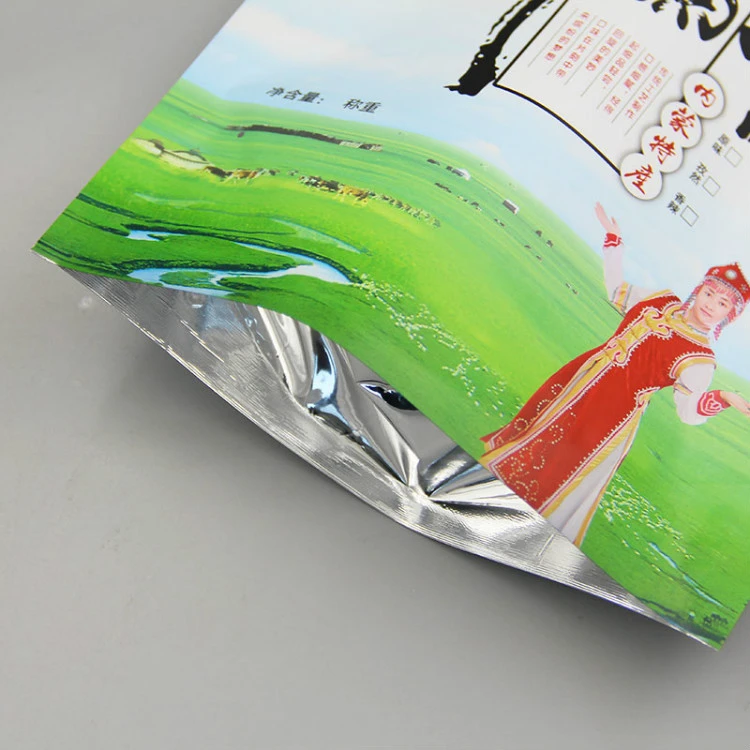Jerky bags packaging plays a crucial role in defining the brand identity and consumer experience for meat snacks. When it comes to purchasing jerky, customers are not only after taste and texture but also the convenience and appeal of the packaging. A good jerky bag must be designed with multiple aspects in mind, from sanitation and preservation to aesthetics and marketability.

In recent years, the demand for jerky has seen a considerable rise owing to the growing popularity of high-protein, low-carb diets. Consequently, packaging innovations have turned into a key selling point. For companies, this involves striking a balance between attractive visual design and functional practicality. Innovative packaging must cater to consumer needs while adhering to food safety regulations and sustainability norms.
The first aspect to consider in jerky bag packaging is the material. Traditional clear plastic pouches are still common, but environmentally conscious consumers are increasingly looking for eco-friendly alternatives. Biodegradable and recyclable materials are growing in popularity as they lessen the environmental footprint. Take, for example, a jerky brand that recently switched to compostable bags, thereby appealing to the eco-minded consumer and gaining an edge over competitors still using non-recyclable materials.

Preservation is another critical factor, as jerky can easily lose its flavor and freshness if not packaged properly. Vacuum-sealed bags and the use of oxygen absorbers inside packets help extend the shelf life. Such advancements in food technology not only ensure the jerky retains its taste and quality over time but also increase consumer trust in a brand's expertise and care for their product. These technologies are not just a testament to a company's investment in quality but also play into the narrative of brand authority within the snack industry.
Design perspective shifts the focus toward visibility and brand identity. Eye-catching designs, creative typography, and bold colors can capture consumer attention. However, it's essential that packaging not only stands out but also communicates the brand's story and values. A brand specializing in organic, grass-fed jerky could use earthy tones and rustic designs to convey its commitment to natural and sustainable practices.
A transparent window in the packaging can also add a layer of trustworthiness by allowing consumers to see the product, eliminating any doubts about quality. In addition, resealable zippers add convenience and usability, enhancing consumer experience by allowing them to keep the remaining product fresh after opening.
jerky bags packaging
Compliance with regulatory standards on food labeling and packaging is paramount. Accurate nutritional information, ingredient lists, and allergen warnings not only fulfil legal obligations but also cultivate authority and trustworthiness among consumers. Ensuring these details are clear and easy to read can influence purchase decisions significantly.
It's important to consider the packaging's influence on customers’ travel habits. Many consumers buy jerky for its convenience as an on-the-go snack, meaning packages should be portable and easy to handle. Introducing smaller, single-serving packs alongside standard-size bags can cater to different customer needs, expanding market reach.
When strategizing for e-commerce, package design must adapt to withstand shipping while maintaining product integrity. Tamper-proof seals can add an extra layer of security that appeals to online shoppers concerned about the authenticity and safety of their purchases.
Collectively, these packaging elements contribute to a holistic understanding of what makes jerky bag packaging effective and appealing. Brands that prioritize these components not only enhance customer satisfaction but also fortify their market position. Through continuous learning, experience, and adaptation, brands can develop packaging solutions that not only meet but exceed consumer expectations, setting new industry standards.
Staying ahead in the competitive landscape demands that brands are not only aware of current trends but can anticipate future demands. By prioritizing experience, expertise, authoritativeness, and trustworthiness in their packaging strategies, jerky brands can craft compelling narratives that resonate with consumers, ensuring loyalty and driving sales in a crowded marketplace.